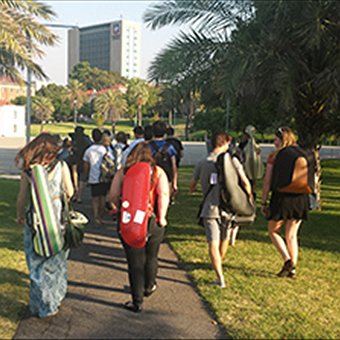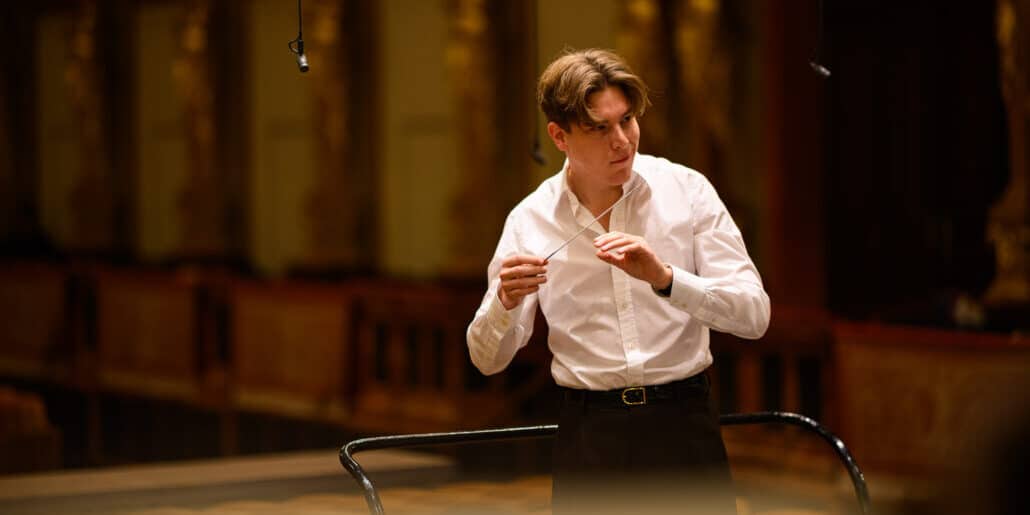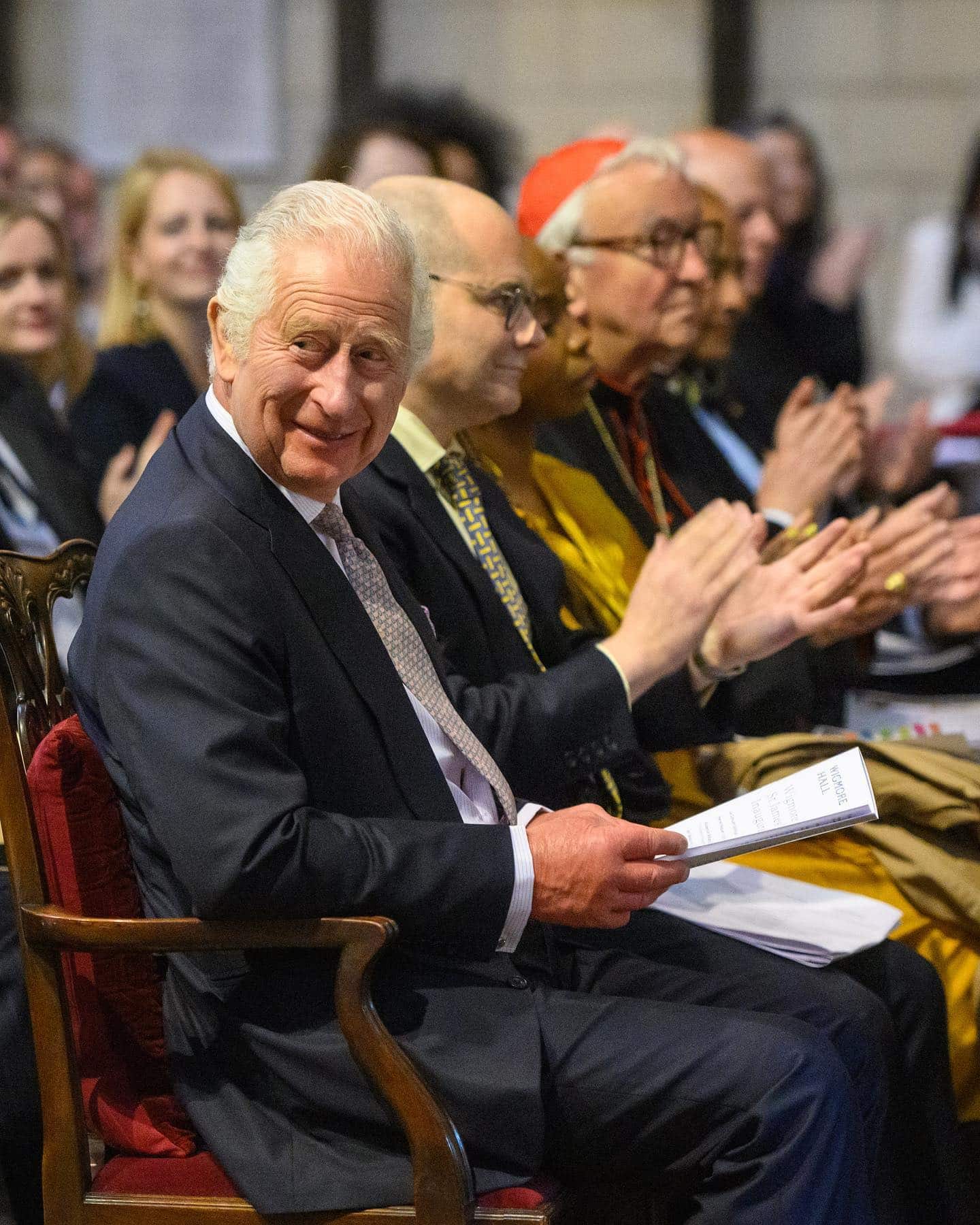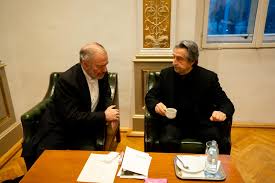The youth orchestra that makes kids pay to play
mainRather shocking intelligence from the Australian Youth Orchestra, whose website promises:
All your experience as a student and player reaches a pinnacle when you become a member of AYO’s flagship ensemble: the Australian Youth Orchestra. Selection is an acknowledgement of excellence at a national level.
But the box on the side says: Cost (per student) $1,250.
The AYO July season involves a tour of Europe, Asia and Australia. Cost per student $4,750.
In both cases, AYO will arrange and cover all travel, instrument freight, meals and accommodation costs associated with the program.
Is that standard practice elsewhere?






I paid same in USA for my grandson to play in Youth orchestra and trip abroad cost much more
Very common in the United States. Most youth orchestras here are tuition based with similar fees. And tours are routinely pay-to-go vanity trips. Of questionable value but not scandalous.
Who else pays it then?
Rightly or wrongly, it is standard, even among élite youth orchestras. For example, NYOGB specifies a “contribution” of £2100 for membership in 2019, although it does have a bursary scheme (which is, apparently, quite generous); see
https://www.nyo.org.uk/who-can-join
(although it should be observed that *auditioning* for NYOGB is free, and there are even travel bursaries available).
If only the rich people, trusts, and foundations in places like the City of London were genuinely interested in supporting musicians and music-making (rather than lining the pockets of starchitects), it would be possible for élite musical training to be free at the point of delivery…
I think you’ll find the AYO is very much an elite orchestra . One of the finest youth orchestras in the world .
It is entirely reasonable to expect to have to pay as there are so many costs involved . First of all tutors for all sections , administration , conductors and when touring from Australia to Europe a considerable amount in air fairs , instrument freight, accommodation . Who should pay for this if not the students partaking in the experience ?
…indeed, would it be fare to pay the air fairs? Fare enough…..?
NYOUSA is free for all participants due to the generous corporate donors in the United States. Given their international tour every year, it probably takes millions of dollars in contributions.
Yes, this is a common practice. Someone has to pay the bills! There are some notable exceptions: the excellent San Francisco Symphony Yourh Orchestra is tuition-free. Other organizations have tuition assistance programs.
One notable exception here in Europe is the Gustav Mahler Jugendorchester (Gustav Mahler Youth Orchestra).
While applicants must cover the initial costs associated with auditioning in one of 25-30 cities across Europe, the GMJO covers all costs (travel, board, lodging and tuition) for those who become members.
Unlike the SFSYO however, membership is only for projects and tours taking place over the course of one year, after which one must reapply and re-audition.
“Is that standard practice elsewhere?” Yes.
Yes, in Germany members of most youth-orchestras have to pay for so-called “Arbeitsphasen” and for travelling etc. during tournees. Not for the pure membership.
The National Children’s Orchestra in Great Britain charges for its courses. (Minimum a thousand pounds) Bursaries are available, after going thru many hoops; essentially making this orchestra available for the more financially viable classes.
Every youth orchestra I was ever in, or ever heard of, had membership fees. (We never went on tours so I don’t know about costs for that kind of thing.)
Depends what they are paying for.
The current project seems to be a way for the Victorian Opera to get a free orchestra for the “esteemed” conductor’s Parsifal.
Wasn’t he the one who was sacked from Opera Australia’s Ring?
Under 25s (minimum standard Grade 7) playing Parsifal with this conductor?!
http://www.ayo.com.au/content/australian-youth-orchestra/gk8fwp
Australia doesn’t have the luxury of staging large scale operas that often, and young musicians rarely get opportunities to experience of playing in the pit before they hit the profession.
Musicians who have been members of the AYO and taken part in past opera productions (Peter Grimes with West Australian Opera in 2010 and Flying Dutchman with Victoria Opera 2015) consider these performances as highlights of their experiences with the orchestra and significant in their own development as musicians. I might add that in both cases the orchestra was critically praised for their performances, and in the case of the Dutchman, a recipient of a Helpmann Award.
Youth orchestra’s may have their shortcomings, but it’s impossible to question the commitment of their players and uncommon to not be moved by the excitement of that commitment.
Seek out a recording of this orchestra playing Shostakovich 10 with Sir Mark Elder at the 2010 Proms – This isn’t an orchestra of school children.
As if that’s not bad enough: their season this year is accompanying a professional opera production (Victorian Opera’s Parsifal – a bit tricky for students’ first opera!) for which tickets cost upwards to $170.
$170 Aus?
A top ticket price of ca. 100 euros for a fully-staged Parsifal sounds like a bit of a bargain.
The Victorian Opera’s website lists prices for the Parsifal performances as starting at AU$35 (€22) and topping out at AU$169 (~€106).
Shocking Intelligence….
That running an orchestra costs money?
Ignoring the fact these participation fees barely scratch the surface of the actual costs of running these projects, If you had clicked a little further on the website you would have found that the organisation has a generous needs-based financial support scheme which works to ensure that an individual’s financial or geographical situation does not inhibit their participation in these activities and projects. In my five years with the organisation I cannot think of a circumstance where any young musician was unable to participate purely on financial grounds.
AYO works tirelessly to ensure that they offer these young musicians programmes of the highest quality as affordably as possible – without successful lobbying of the government and the support of wonderfully generous donors and supporters these costs would be significantly higher than they are.
Maybe it’s a slow news day, but please stop lighting fires.
There are no slow news days. This was a call for information, to see how it’s done around the world.
The Toronto Symphony Youth Orchestra has no fees.
Thank you.
It was cunningly disguised, then. The headline observes that the AYO charges fees, and it doesn’t make this observation in an objective fashion. It implies that the AYO is in a minority in doing so. The article then hints that the AYO’s practice is somehow immoral and, at the end, tosses out a rhetorical question which could have been answered with a bit of Googling. For that matter, given that any ensemble bigger than a string quartet performing in a living room has got to pay for things and has got to get money from somewhere, the question could likely have been answered from first principles. Not sure how poor old AYO got itself in the crossfire.
If this had been a simple call for information, the first sentence of the article would not have contained the word “shocking.”
Absolutely standard in the US, with a very few exceptions such as San Francisco, as noted above. Students pay tuition for the year, and pay additionally for touring with the group, with scholarships (bursaries) available to the extent the organization can fundraise to cover them. The amounts shown for the Australian group are quite middle-of-the-range here; I’m very surprised that anyone finds this surprising.
Uk county youth orchestras have membership fees. This is the norm. Why would someone else want to pay for my kids to have orchestra rehearsals if I didn’t ?
The same argument applies across a huge range of activities. And the answer is because the benefits are not felt just by the individual but by wider society, they are long-lasting, and central funding enables poorer students to take advantage of the opportunity. Why should playing great music be only for rich people? Basically it’s a socialist argument: let’s pool resources and benefit everybody, not expect the wealthy few to have all the fun.
And those prices are in cheap Australian dollars.
Multiply x 0.71 for US prices.
A three-continent tour for $3400… that’s not crazy expensive.
Whether it’s “worth it” depends on how good the musical experience and coaching is. It could be great, it could be lousy.
You’re pulling our leg, aren’t you? Absolutely standard practice in privately and publicly-run youth orchestras in the UK (though level of fees and availability of bursaries varies), and has been since at least the 1980s, when I was playing in them myself.
Conductors, soloists, instrumental coaches, sheet music, accommodation, pastoral staff, instruments and venue hire don’t suddenly come free of charge simply because the players are aged under 18! In fact, running a top-flight youth orchestra is every bit as complex and labour-intensive as managing a professional band.
In France and Germany it’s free. Naif as I am, I’d always assumed that, in the UK, most kids in the NCO and the NYOGB are on full scholarships.
No it’s not free in France and Germany, unless some billionaire is sponsoring it. The taxpayer picks up the bill. So this means the people who are not privileged pick up the bill for those who are. seems something wrong in that.
They do offer generous full and partial bursaries, but from what I hear from past and present players it’s very unlikely that more than a handful of members in either NYOGB or NCO pay absolutely no fees at all. Doubtless the organisations themselves could provide details. But in the absence of continental-scale state subsidy, it’s completely usual in the English-speaking world for youth orchestras to charge for membership and as far as I’ve been able to find out, this has been the case since most of them started, in the late 40s / early 1950s. Hence the tone of surprise that this should be considered headlineworthy.
I am really surprised making money on student !!!
I think this is free in France
Not making money, (partially) covering the costs involved. If you think operating a youth orchestra is a good way to line your pockets, go ahead and try!
They should be emulating the Venezuelans:
Create a government ministry for the orchestra, then send it on an endless summer of world touring in five star hotels using hundreds of millions in state assets while the nation starves. Do a deal with Deutsche Grammaphon for recording rights.
Nobody will pay any attention to the human misery of starvation, homicide, hyperinflation and international drug distribution because the cameras will all be turned on the impossibly seductive sight of kids playing Mahler dressed in the government’s flag, a narrative far too compelling and worthy for anyone to care or ask probing questions!
In fact, they will be held up as models by the left, the evidence that anti-imperialist, Castro-Cuban revolution works after all and is just beautiful! That music heals all! And by the time they do ask questions, well, they’ll just blame the Americans of plotting a coup! Win win!
And, even better… Appoint a conductor who will play along until every last dollar is gone, then deftly jump to the other side and call for aid to be allowed in to help the starving!
That’s how to fund a youth orchestra program, my friends! It’s genius!
NYO-USA is free and pays all travel and food costs for its members. A spectacular program particularly because its participants do not have to spend a dime of their own.
Yes, the San Francisco Symphony Youth Orchestra is an exception here. Free tuition, taught by principals of the big orchestra, playing to full houses in SF, and touring Europe this June at the Berlin Phil, Elbphilharmonie, and Musikverein. Not bad. Their recording of Mahler 1 at the Berlin Phil compares to many professional orchestras. Good on the SF Symphony for this.
The 1st mvmt at least is available on YouTube: https://www.youtube.com/watch?v=kOaO9La5XuI
My kid’s youth orchestra charges tuition but there are need-based scholarships available and I am aware of quite a few kids from non-privileged backgrounds whose fees are undoubtedly covered in part or entirely by the organization. The tuition goes to pay the conductors, the office staff, the professional sectional coaches, and all the other expenses connected with putting any orchestra on stage. This has been the norm for a very long time; my parents were paying fees in the 1970s for my participation in a flagship youth orchestra in a different U.S. state.
Incidentally our local youth orchestra organization is extremely well run and not only covers financial need for many of its students, it even pays private lesson fees for a few students, selected on the basis of underserved populations and personal potential, not current star status. I am more than happy to donate towards these programs in addition to paying the monthly tuition.
It isn’t as if willingness to pay the fees will guarantee a student’s admittance; it is NOT pay to play. Students accepted into the program are assigned to one of seven or eight orchestras (I lose count) based on their playing level, and tuition is adjusted accordingly with the lowest orchestras charging the lowest tuition. My child is in the top group and tuition is $77/month for a school-year season.
Private lessons cost money; why would one not expect the same of a youth orchestra that requires numerous administrators and professional musicians?
Here in Portugal the only Youth Symphonic Orchestra (http://www.sinfonica-juvenil.com/) that has a season that lasts for the full year, like a professional orchestra, costs nothing and even pays the musicians that attend (they pay for each rehearsal, concert (although this doesn’t even come close to a regular salary) and even have “special” grants for the ones that apply and win internal auditions). These funds come from the state but also from private corporations and banks.
There are other two Youth Orchestras but only active in the Easter and in the Summer. Those charge you somewhere around 150 to 400€, depending on the travel that has to be done.
Essentially all youth orchestras have a fee. That’s how they can operate. There is no scandal here.
The UK has The National Orchestra for All which is completely free for participants (11-18 year olds) and does not make prospective members audition. It works on a nominated entry process. Further information:
http://www.orchestrasforall.org/national-orchestra-for-all